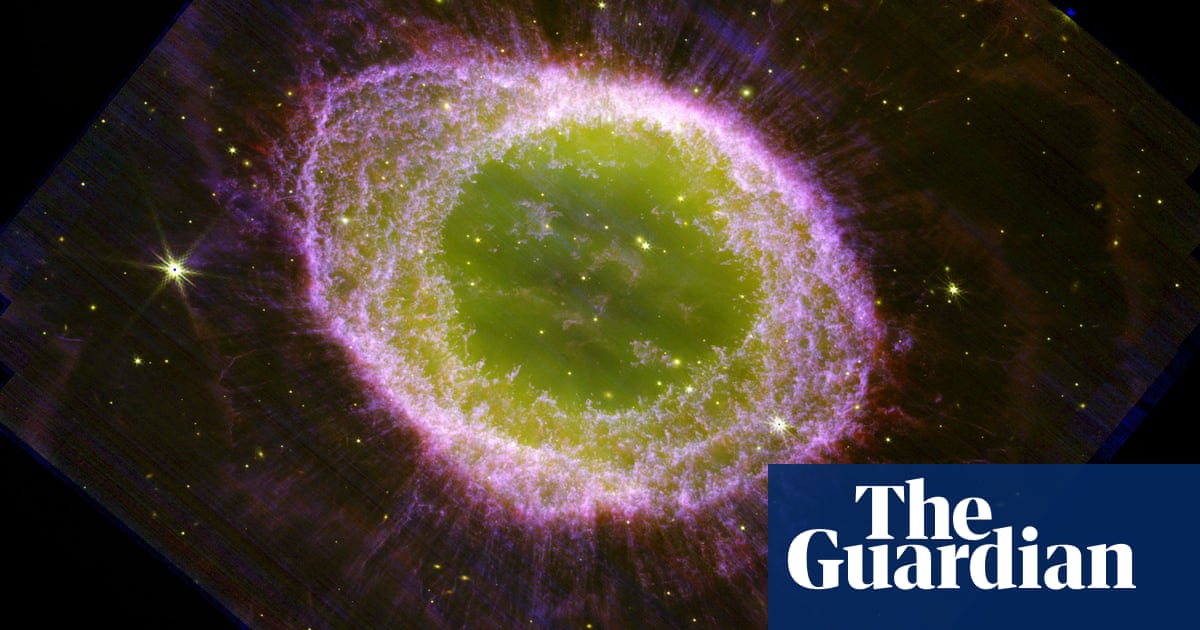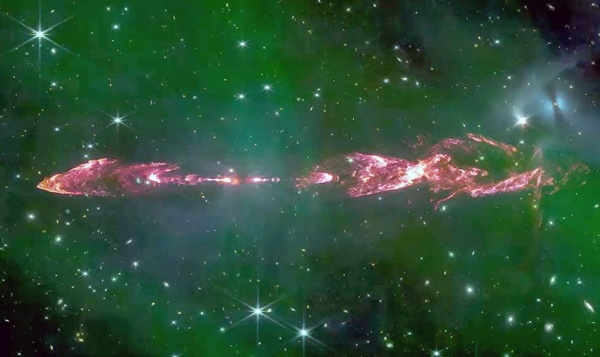
Stunning images of the final stages of a distant star’s life have been captured by the James Webb space telescope (JWST) in unprecedented and exquisite detail.
Released by an international team of astronomers, the snapshots reveal the doughnut-shaped structure of glowing gas called the Ring Nebula, a well-known object in the sky, which lies about 2,600 light years from Earth.
The nebula formed when a dying star blasted much of its material into space, producing vivid coloured rings, expanding bubbles and intricate, wispy clouds. A similar fate awaits the sun when it expires billions of years from now.
The high-resolution images from the telescope’s near infrared camera (Nircam), show not only the structure of the nebula’s expanding shell, but the inner region around its central white dwarf, a very dense star that is roughly the size of a planet.
Although they have nothing to do with planets, such objects are known as planetary nebulae. The term is a hangover from the early days of astronomy when scientists armed with small telescopes thought they resembled planets.
“Stars like the sun are expected to end their lives as white dwarfs by ejecting their outer envelopes, which then form beautiful planetary nebulae that are illuminated by the radiation from their very hot pre-white dwarf central stars,” said Prof Michael Barlow, emeritus professor of physics and astronomy at UCL, who led the team.
The colourful bands in the nebula are created by chemical elements that emit light at different wavelengths. By analysing the images, astronomers hope to learn more about the complex processes that generate nebula structures and the life cycles of stars and the elements they shed into the cosmos.
“We don’t yet fully understand all the processes that take place during this caterpillar-to-butterfly-like phase,” Barlow said. “The Ring Nebula in Lyra is one of the closest and brightest of these planetary nebulae and is therefore an ideal target for JWST to study the small-scale and large-scale processes that work to form the dusty molecular structures that we see in these images.”












